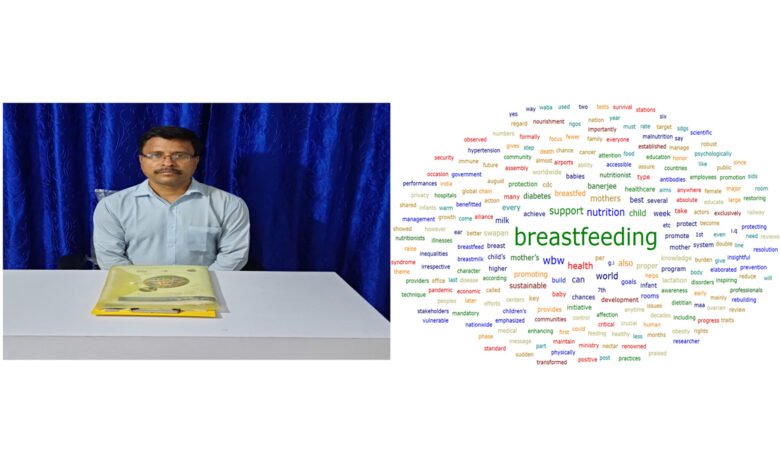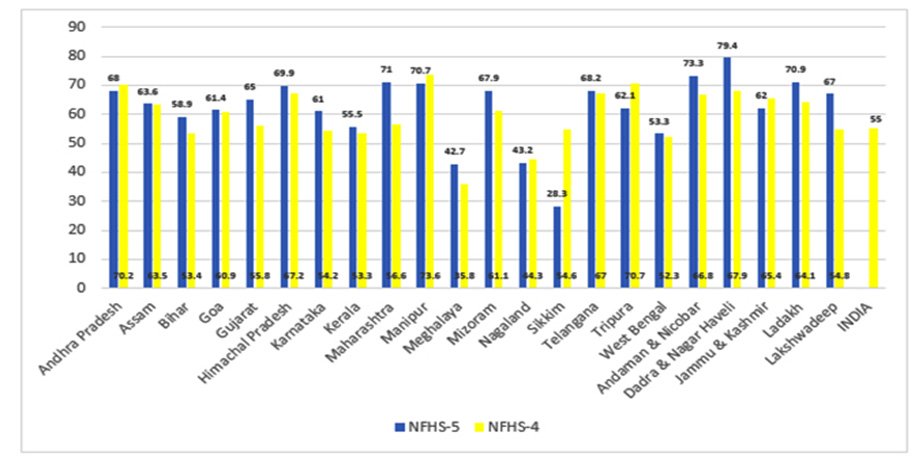
World Breastfeeding Week (WBW 2022): Protect, Promote, and Support Breastfeeding-An insightful review by nutritionist Swapan Banerjee.
“Step Up for Breastfeeding: Educate and Support” is the theme of world breastfeeding week, 2022. On the occasion of WBW 2022, Swapan Banerjee, a renowned dietitian and nutrition researcher, shared his views and reviews on enhancing breastfeeding awareness. There is a say that mother’s milk is as same as nectar. Yes, it is because mother’s milk not only gives the best nutrition to a baby but positive human character traits. More importantly, breastfeeding helps both child and mother.

World Breastfeeding Week (WBW) is a worldwide initiative for promoting breastfeeding and inspiring others for child’s nutrition. To raise public knowledge and support for breastfeeding, WBW was established in 1992. Every year, WBW is formally observed from 1st-7th August, and several topics are used to honor it, such as healthcare systems, women in the workforce, support for vulnerable communities, economic growth, scientific knowledge, and peoples’ rights. WBW has been in line with the Sustainable Development Goals since 2016. (SDGs). A World Health Assembly resolution from 2018 praised WBW as a crucial technique for promoting breastfeeding.
According to World Alliance for Breastfeeding Action (WABA), breastfeeding is key to sustainable development strategies that assure proper nutrition for a child, food security, and management inequalities. Here are sustainable goals and critical aims for this:
- Breastfeeding can manage the double burden of malnutrition worldwide.
- Rebuilding the actors’ ability in the warm chain through proper education and a transformed system.
- The higher need for breastfeeding in the COVID-19 post-pandemic phase.
- To achieve the global nutrition 2025 target.
- Everyone should take part in restoring, protecting, promoting, and supporting breastfeeding.
As per the Centers for Disease Control and Prevention (CDC), breast milk provides antibodies to a baby from her mother that build a robust immune system and protection from many illnesses. Breastfeeding can reduce the chances of some health issues, mainly type-1 diabetes, sudden infant death syndrome (SIDS), and ear and G.I disorders, including obesity. CDC also elaborated that mothers’ who breastfed also have fewer chances of ovarian or breast cancer, hypertension, type-2 diabetes, etc. So, mothers are also benefitted physically and psychologically. Mothers can breastfeed their babies anytime and anywhere because breastmilk is the best source of nutrition for all babies.
As per WHO, breastfeeding is the best way for a child’s future health and survival. However, 2 out of 3 infants are not breastfed exclusively for the first six months. There has been no progress in two decades in this regard. Several studies showed that breastfed children’s performances are usually better irrespective of I.Q tests, body weight, and less chance of diabetes at early or later age. WHO says inappropriate marketing of breastmilk substitutes is a cause of suppression of breastfeeding rates globally. The fig.1 is self-explanatory to show the point estimation of the first five months of Unicef regional aggregates, where south Asia is the highest and east Asia and the pacific is the lowest.

After birth, within the first few days, the mother produces “first milk” called colostrum which is thick and yellowish. Colostrum should not be missed because it helps to develop the digestive tract and make it ready to digest breast milk. After colostrum is the first phase of milk, there is a 2nd phase called transitional milk. At last, the baby gets mature milk from the mother, and the duration is usually10-15 days from birth, starting from the first milk to mature milk.
Further, it is usually recommended to breastfeed for the first six months without any juice, formula milk, or even water; else, milk production may be less. At the weaning time (just after the 6th month), some semi-solid cum solid food should be given to the baby in addition to breast milk regularly till 12 months, followed by on-demand.

The above fig.2 shows that AP, Nagaland, Sikkim, Tripura, and Jammu Kashmir have declined exclusive breastfeeding in 2019-2020 (NFHS-5) compared to 2015-2016(NFHS-4). However, the rest of the states show marginal to significant improvement in the breastfeeding rate through various government initiatives.
The Ministry of Health and Family Welfare is running Mother’s Absolute Affection (MAA), a nationwide program to focus on infant and young child feeding practices. The program provides undiluted attention to promotion, protection, and support for breastfeeding to achieve a higher rate of breastfeeding. Like in other countries, many breastfeeding rooms(also called lactation rooms) are accessible in India to maintain privacy. It has become almost mandatory to have a lactation room in every standard office (where large numbers of female employees), at hospitals, airports, and even at major railway stations.
At last, nutritionist Swapan Banerjee emphasized the key message that not only government and NGOs will give efforts and take the initiative, but all nutritionists, medical professionals, community health workers, healthcare providers, and other stakeholders must come up to protect, promote, and support breastfeeding because proper nourishment of every child can build a healthy nation.






